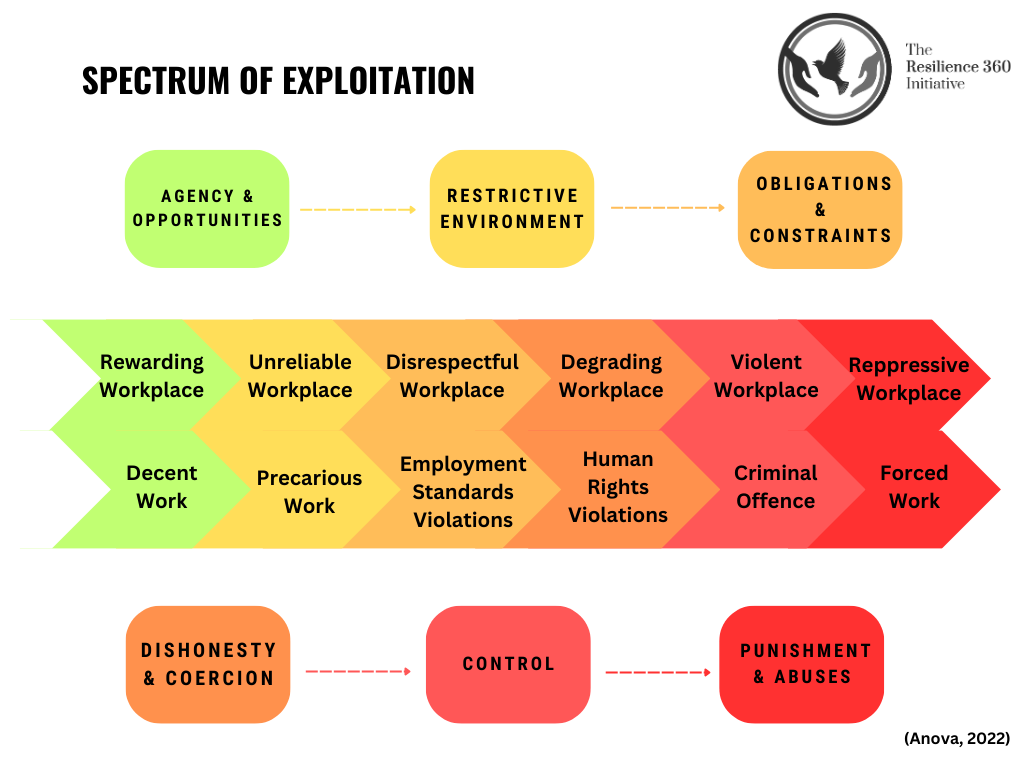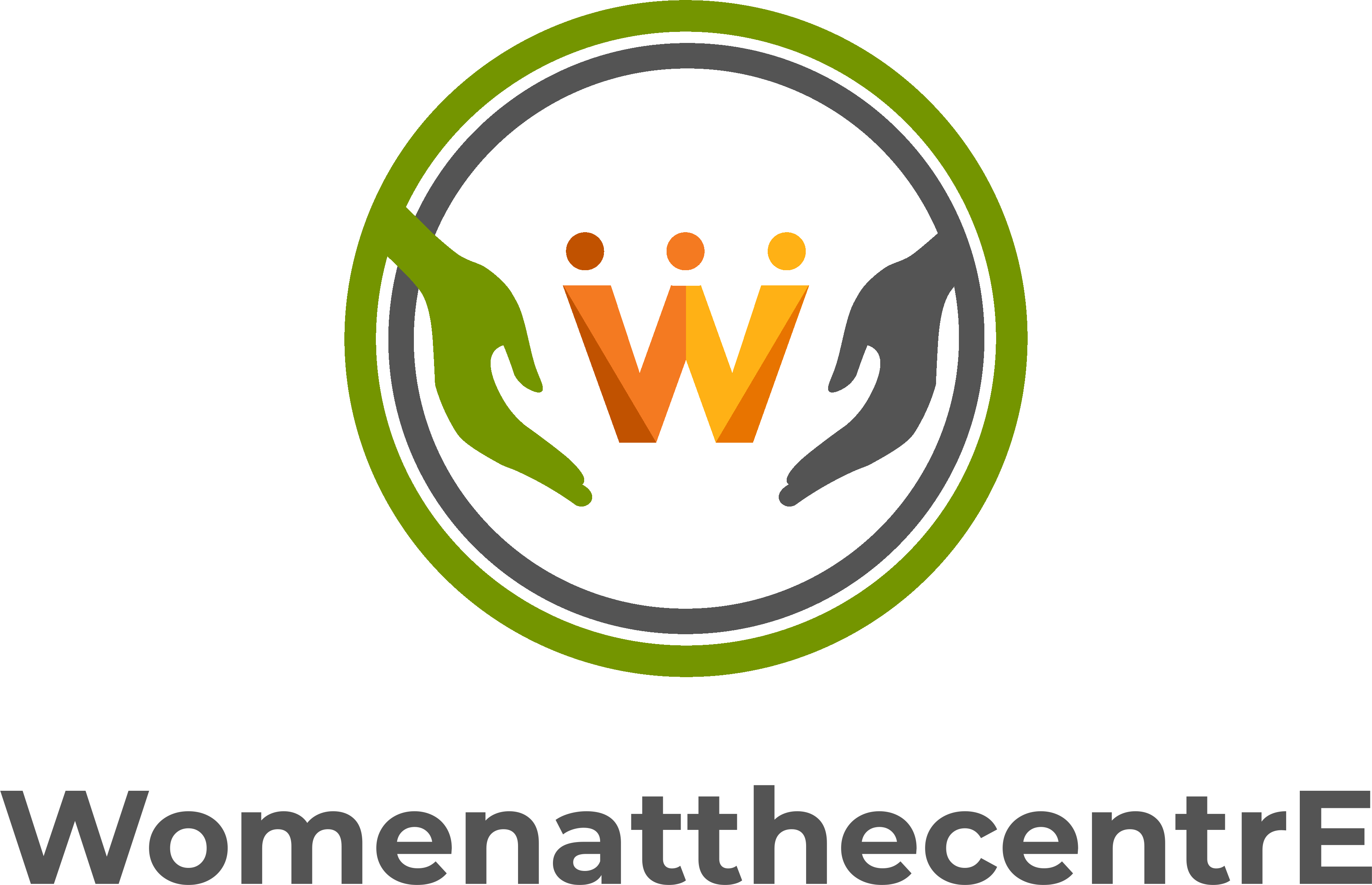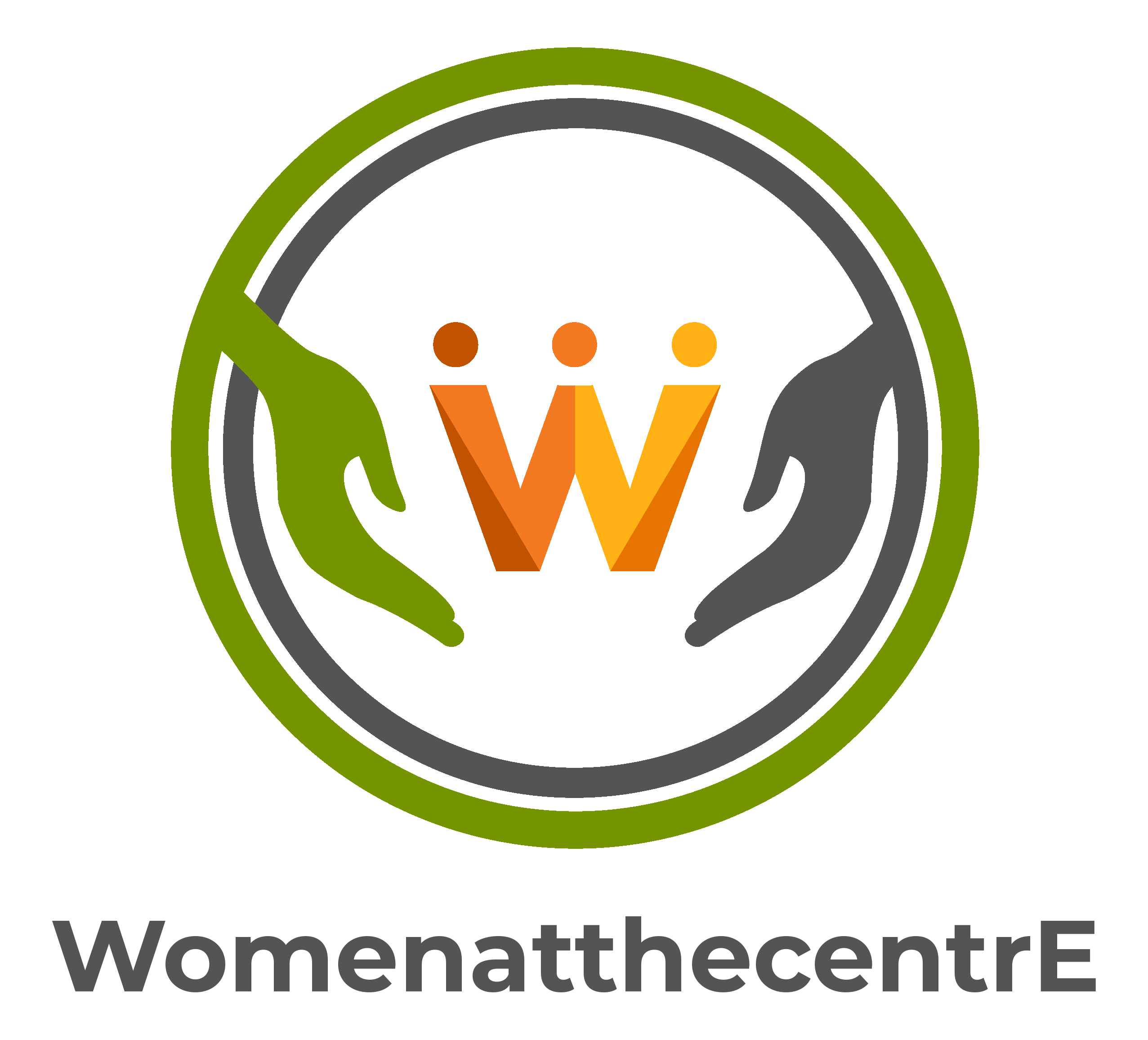
In equitable work environments, workers have opportunities and respect. As conditions worsen, workplaces become exploitative, with issues like precarious work, rights violations, and control. At the extreme, workers face coercion, violence, and criminal offences, often forced to work through deception and abuse. This highlights how exploitation can escalate, with trafficking at the most severe end. Exploitation in the workplace can take different forms depending on various conditions. Agency & Opportunities allow workers to have control, fair pay, safety, and the ability to leave harmful situations, where they feel respected and valued. In a Restrictive Environment, opportunities decrease due to instability, poor pay, and lack of benefits, causing workers to feel trapped and undervalued. Obligations & Constraints, such as family responsibilities and financial hardship, further limit their ability to leave unsafe work. Exploitation often begins with Dishonesty & Coercion, where false promises mislead workers about pay and conditions. It escalates through Control, where workers are stripped of autonomy through threats, withheld documents, and restricted access to resources. At the most severe level, Punishment & Abuse occurs, with workers facing violence, fear, and dehumanization, leaving them unpaid, confined, and afraid. These stages highlight how exploitation progresses and the need for protective interventions (Anova, 2022).
Regardless of whether someone is trafficked or exploited, it is important to remain aware and offer support throughout their journey, if they are open to it. Legally, the duty to report and access to services vary depending on whether an individual is exploited or trafficked.
Here are definitions that inform this toolkit and the language used throughout.












